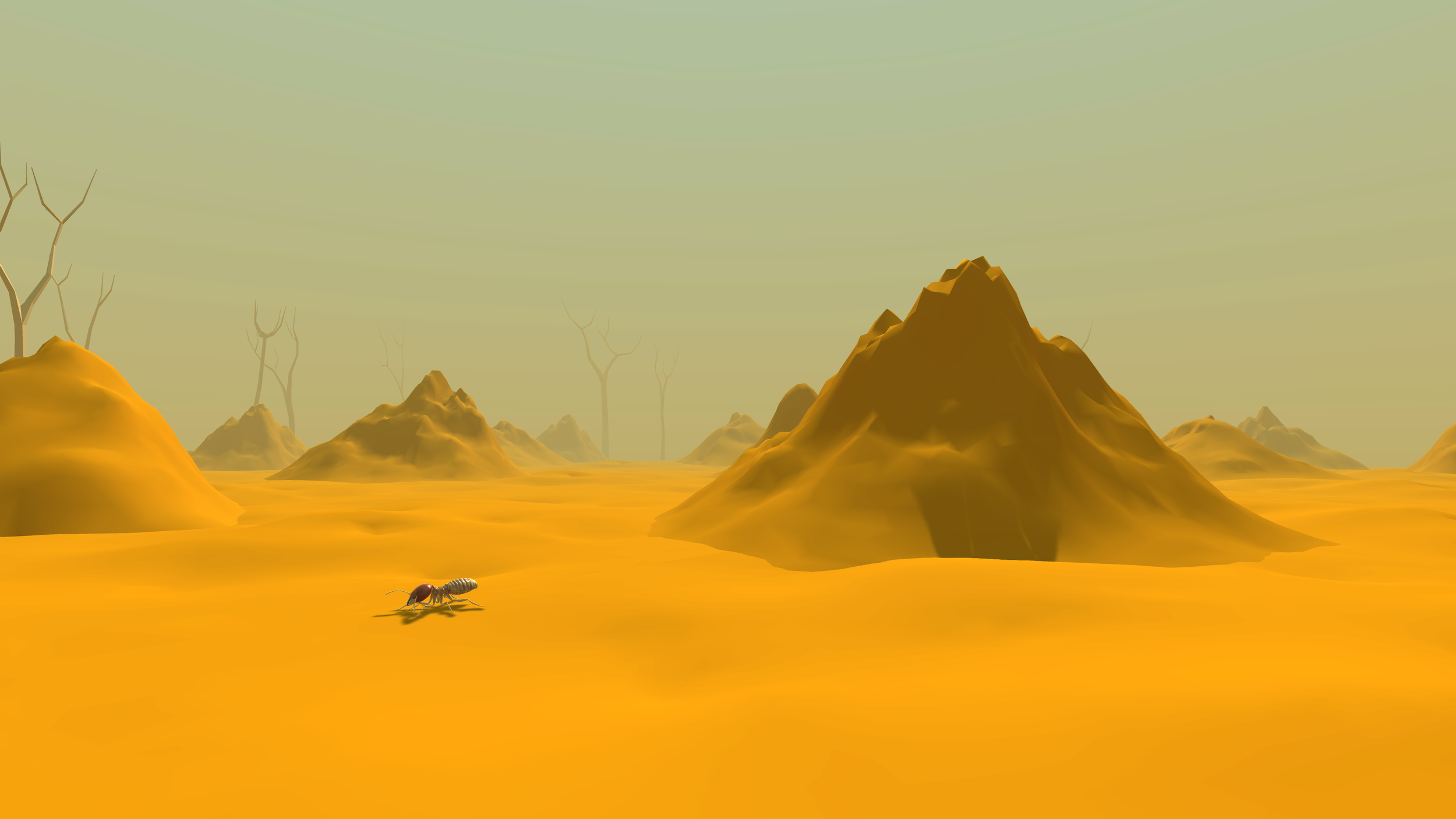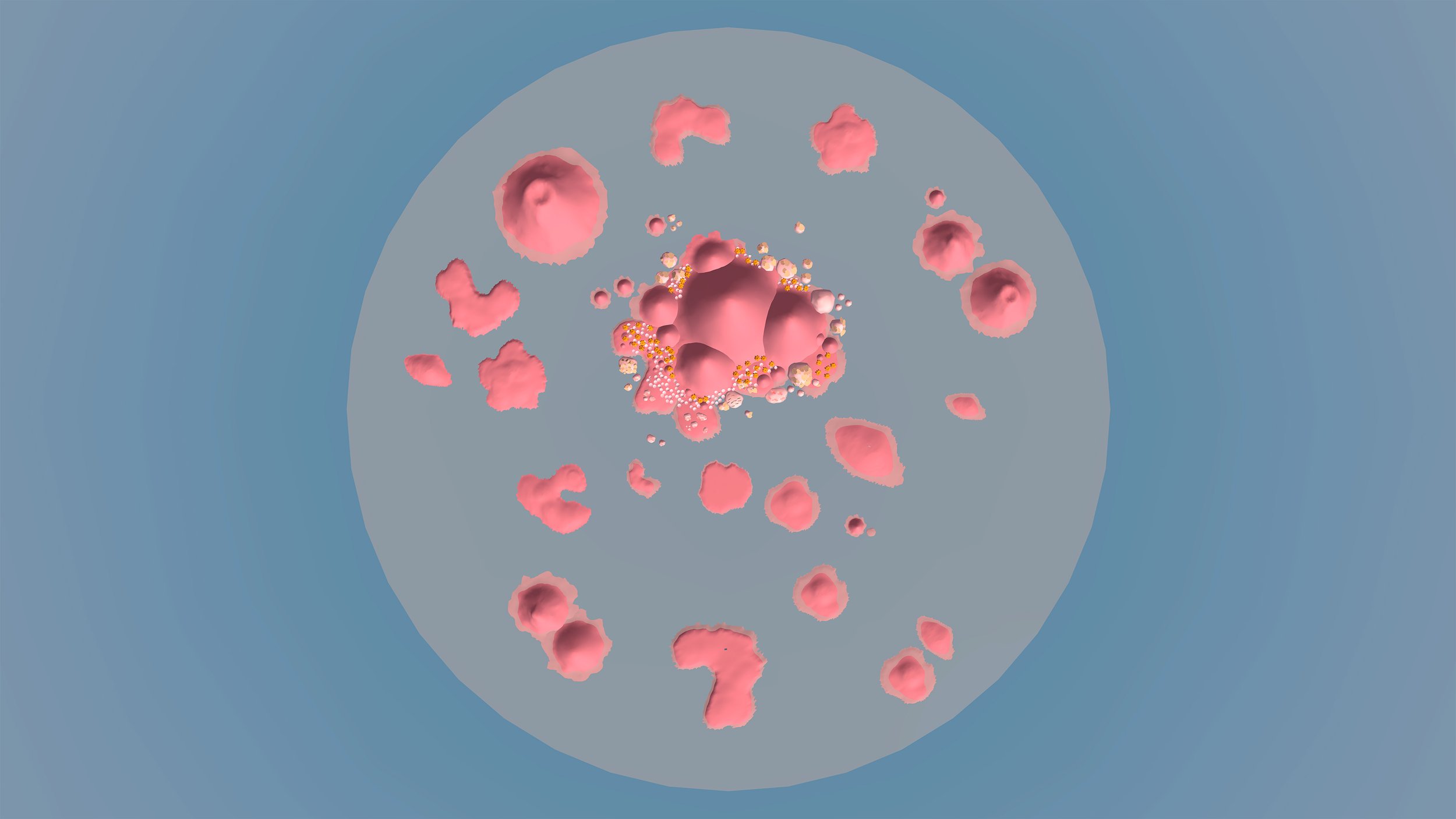
Interplanetary Melody VR
Storytelling is at the heart of human existence. Telling stories has been an important cultural aspect around the world for centuries – the earliest depictions date back not long after the development of language itself.There is evidence to show that stories not only captivate our imaginations but also bring us closer to one another on an emotional level.
On a psychological level, stories affect us in several ways: through transportation - the reader loses themselves in the fictional world, and through identification - the reader takes on the perspective of the characters. Both of these can increase our levels of empathy toward others.
Researchers have found that when complex climate science is broken down in this way, information is processed in a more personal way, engagement increases, and emotions are roused. All this can result in us being more likely to take action for the planet.
Interplanetary Melody is the story of an ancient Lake (Lake Chad) travelling hundreds of thousands of kilometres to help an endangered ‘other’ – The Amazon Rainforest.
This journey connects landscapes inhabited by species sharing mutual relationships, based on their agency to co-create their environment. Underscoring the tenacity of life – yet also the fragility of seemingly permanent ecosystems.
It begins with one of the earliest and smallest life forms on earth – diatoms, morphing into dust, allowing life to bloom – and ends with the extraordinary relationship between termites and elephants.
Translated into a VR experience, visitors are immersed into this allegedly imaginary story, inviting them to rethink how to amend our damaged planet.
Collaborators and Contributors:
David Sillam-Dussès, Edwin Rios, Justine De Penning
Year: 2022

1. Prelude: Mega Lake Chad
It all started in the land of lakes around 2.5 billion years ago. Once considered one of the biggest waterholes on earth, Lake Chad used to spread across the entire Northern part of the African continent. With its many floating islands, this place - an ‘oasis of life’ was habitat to a wide variety of wildlife, from large mammals to large communities of migrating birds.
In the water, plants, algae, and other microorganisms used to thrive to sustain fish and all other aquatic forms of life. All creating together and coexisting as one, as a super-organism in harmony.
2. Dust Dreams
In a small and forsaken part of the Sahara Desert that was once a part of Lake Chad, there is a depression named Bodelé. Rivers, wetlands, and lakes formed and expanded, creating warm shallow regions where vegetation, including grasses and trees, once thrived in this place - the ‘Green Sahara’. The water, far from being empty, was teeming with life, as algae, and more specifically diatoms, ubiquitous to all water systems, were abundant in their multiple forms.
Over the centuries, the Sahara Desert began to dry up, leaving a lakebed filled with siliceous remains. In the winter months, due to differences in global atmospheric pressures, a dry wind blows between the mountain ranges surrounding the area.
By creating holes or micropores while burrowing through the ground, termites facilitate deep soil penetration by rainwater, preventing it from evaporating quickly and helping the soil retain its nutrients while resisting erosion.
Their mounds are among the largest structures built by any non-human species, reaching heights of up to 10 meters. Impressively, termites are blind and deaf, relying on vibration signals and pheromone cues as their primary means of communication. When constructing these complex mound structures, they ingeniously craft a mixture of their feces, clay, soil, and silica as building materials. This silica, in the form of quartz, enhances the propagation of vibration signals inside their nests.
5. The Termite and the Elephant
While termite colonies may endure for decades, what truly matters for our narrative is the fate of their mounds after the colony's demise. Though it may take a century for them to erode, the forces of rain and wind inevitably prevail, leaving behind a clay scar etched into the landscape. Numerous species benefit from these abandoned mounds, utilizing them as new habitats for protection or sustenance. Yet, amidst this natural cycle, one relationship stands out: the remarkable bond between termites and elephants—a relationship of provision and reliance that has spanned millennia. Elephants are drawn to the remaining patches of clay in termite mounds, rich in salts and nutrients.
During rainfall, these clay patches transform into sticky mud, enticing elephants to wallow in them. Not only does this behavior help them stay cool, but the clay also acts as a shield against sunburn and biting flies. With each visit, the weight of the elephants gradually carves depressions into the soil, which, over time, evolve into oases, providing shelter and sustenance for a variety of species.
6. Biome Change
Despite the illusion of stability created by gatherings of species in both time and space, nature is inherently dynamic, and these communities can only persist as long as the conditions conducive to their existence endure. The story of elephants, which became extinct in South America during the late Pleistocene, exemplifies this truth. When the conditions of a biome change—be it in temperature, acidity, seasonality, or rainfall—various constituent species may lose their foothold. For some, this entails migration, as they track the shifting environment across the landscape. However, certain environments are not merely relocated but lost entirely. Yet, such transformations do not always spell total disaster or ecological devastation; rather, they can lead to the emergence of new combinations of creatures and landscapes, giving rise to entirely new worlds.
On its passage, the jet stream grinds together the diatom remains into the consistency of the finest dust. On average, 180 million tons of this powder are lifted into the atmosphere, and from there, these particles are carried across the Atlantic, finally coming to rest in the Amazon Rainforest.
3. Amazon Whisper
Due to heavy tropical rains, much of the nutrient value is washed away from the soil, resulting in a permanent deficit in the rainforest. The only source of replenishment comes from the long-distance aerial transport of silica-rich dust from the distant Sahara, thousands of kilometers away. This Saharan dust nourishes plants in the Amazon jungle, allowing life to flourish. Two locations, one symbolizing abundance, fertility, and coexistence, while the other embodies desolation, melancholy, and despair, are separated by an ocean where communication seems impossible. Yet, they somehow communicate, as if one continent whispers to the other as if the Sahara remembers their shared history in Pangea.
4. Termites: Guardians of the soil
In the Amazon, a community of tiny invertebrates plays a vital role in safeguarding the entire ecosystem during the rainy season. As the rainforest floor is constantly covered with shed leaves, branches, barks, and stems in various stages of decomposition, termites thrive as decomposers on its surface soil.

Colour Palette: Colour plays an essential role in the narrative story. With help of drastic changes in value, hue, saturation, and temperature different emotions are portrayed in each scene. While perceptions of color are somehow subjective, some color effects have universal meaning. Starting on the blue side of the spectrum, these shades, also known as cool colors” induce a calm feeling in the user at the beginning of the story. Often associated with feelings of sadness and nostalgia they call to mind a sentimental longing or a melancholic affection for a period in the past. As the narrative progresses, pink gives a feeling of harmony. Applying smooth changes of red gradient intensity demands attention and facilitates the processing of information to the user.
The color yellow is used as a representation of a source of energy as its often associated with the sun. The emotional response in these scenes should awaken a feeling of safety, trust, and attachment, giving the user a warm feeling of love and hope. As the experience comes to an end, it transitions from yellow to green. As green has strong associations with nature, it concludes the story by leading to awareness about the environmental crisis.
Material Concept: Mass of modelling clay as a malleable material that morphs to create objects. Material Texture: Each animated piece, either character or background is made using a material texture that gives an illusion of a “malleable substance”.
This “Claymation” technique suggests phases of motion or change in matter as it undergoes mixing, recomposing, and dispersing around the planet.
Location references: In this fictional world, each scene draws directly from existing places for inspiration. 1. Laguna Colorada, Potosí, Bolivia 2. A Salt island, Laguna Colorada, Bolivia. 3. Wadi Rum “Valley of the Moon”, Aqaba, Jordan. 4. Tsavo, East National Park, Kenya 5. Caatinga Forest, Brazil: South America’s largest dry tropical forest (Researchers found in this place a vast network of more than 200 million termite mounds). 6. Caatinga Forest, termite mounds aerial view. 7. Amazon Rainforest, Yasuní Biosphere Reserve, Ecuador.
